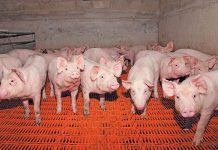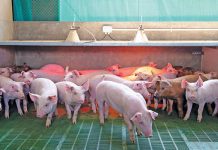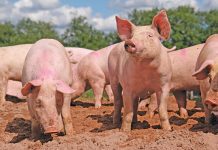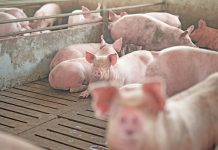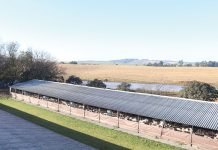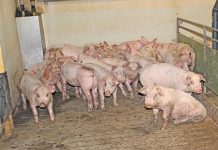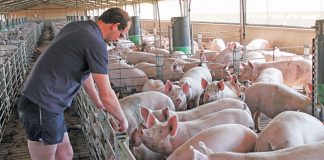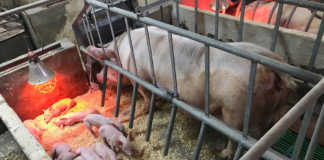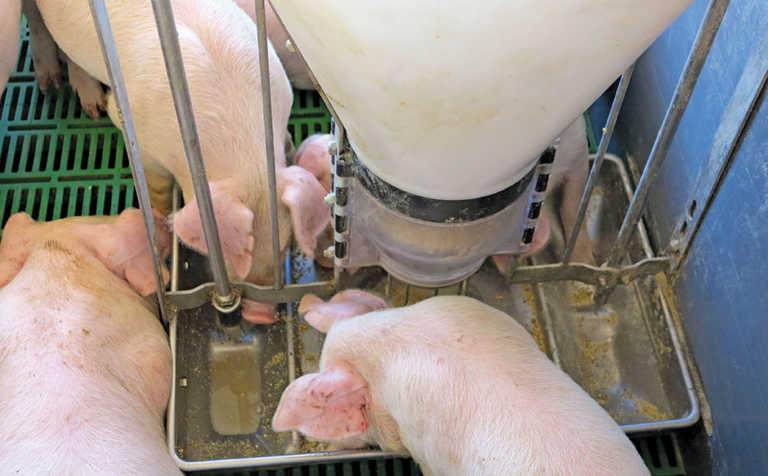
Photo: FW Archive
Many novice farmers jump into a new venture, boots and all, before gaining an insight into what the operation will entail going forward – a recipe for failure.
When it comes to pigs, consider why you want to farm them – as a business, merely because you like them, or because you want to use their meat for yourself. This will help you to choose the correct method of pig farming:
OPTION 1: Intensive pig farming. Unlike other livestock farming, such as sheep or cattle on rangelands or on a pasture system, pigs can be raised on a comparatively far smaller area. In intensive pig farming animals are usually kept in close proximity to each other in a housing system.
This option is more suited to farmers aiming to supply the meat market. The idea is to try grow the pigs to slaughter weight as soon as possible to save on long-term feed costs. The quicker you can get the pig to slaughter weight, the less money you will spend on feed.
OPTION 2: Free range. In free range pig farming, pigs are kept in smallish camps where feed crops such as oats, barley, or even lucerne and grass can be grown as food for them. These pigs may also be fed a bit of extra pig meal daily to supply essential nutrients and help them to grow faster.
Pigs cannot be farmed on natural grasslands because, unlike sheep and cattle, their stomachs can’t process very coarse foods such as dry grass roughage.
Pros and cons
You will require considerably more land with a free range farming system. You will also need a few camps, to grow crops in one area, while the pigs graze in another.
- Pigs tend to dig up soil with their snouts in a ‘ploughing’ manner. In a free range system it’s reasonably easy to plant seed again in areas where the feed has been depleted.
- Simply sow new seed and rake it closed, or chase the pigs over the area to trample the seed into the soil. Irrigation might be needed to get the crop to grow.
- Free range pigs still need shelter, but this will not be as expensive to erect as the enclosures in an intensive system.
- Free range pigs seldom grow as fast as intensively farmed pigs because they expend more energy to walk around while feeding, may lose more weight due to inclement weather, and do not eat a concentrated ration.
What you lose on growth, however, you may gain by not having to buy expensive bagged feed.
Intensive pig farming is usually undertaken by commercial farmers in state-of-the-art housing where all water points are mechanised. They may have heating and cooling systems, and numerous different compartments are required for the different categories of pigs.
For example, breeding boars will be kept in separate pens, pregnant sows may have their own enclosures, and you have to separate different classes of pigs into different enclosures to reduce feeding competition.
In short, it is expensive to immediately enter into the commercial pig farming domain.
Other issues
Even in a more basic intensive farming operation, a few challenges remain because of the cramped system in which animals are farmed. Issues such as management, hygiene and disease outbreaks need careful thought.
Buying balanced pig feed will be expensive upfront, but pigs will grow faster and be marketable earlier. At the same time, issues such as daily waste removal from housing requires more labour.
Some farmers collect waste, place heaps in windrows away from the housing and add dry leaves, grass cuttings, vegetable peels and so forth to make compost to supplement their income. Heaps are turned over daily to dry and can later be bagged and sold to gardeners.

